Experimental ekranoplan ESKA-1
On the theoretical basis of the near-screen flight and on the design of the ESCA-1 tells Grunin E., one of its creators.
History EKR began in the middle of 1930's, when they created a hybrid of an air cushion vehicle, a speedboat and an airplane. The Finnish engineer Thomas Kaario, the creator of this machine, is considered to be the pioneer of EFC.
The designs of the first EK, in spite of the outward exoticism and all the variety of forms, did not differ in refinement. At that time, there was no theory of screen flight. The overwhelming majority of projects were created on the basis of experimental data and, naturally, the devices were obtained imperfect. During this period (and also at the end of the fifties), the problem of longitudinal stability was a stumbling block.
The first to solve this problem was the aircraft designer Lippish A. In the 1964, they built and successfully tested the X-112 E-gun. Then, in 1972, the light saw another device, the X-113A. This machine, made of fiberglass, showed excellent flight properties, and the aerodynamic quality was 30!
Based on the theoretical calculations of EFC, the machine created should be light, but at the same time durable, technologically advanced, reliable to operate. Finally, it should be cheap.
Given these, in some cases mutually exclusive requirements, we analyzed several possible structures. As a result, it was concluded that the simplest will be a wooden apparatus, in which aviation plywood, as well as fiberglass, foam plastic and other materials will be widely used.
For the wing of the ESCA-1 screen, a modified profile of the central aero-hydrodynamic institute R-11-CLARK-U, having a flat bottom bypass, came up. On the studied models, the profile has proved itself well. The wing has a geometrical and aerodynamic twist: at the root of the wing, the relative thickness of the profile is 10 percent, at the end of 12,5 percent, and the angle of deviation of the profile to the end of the console from the building horizontal of the screen from the root decreases to 2,5 degrees from 4,5.
In terms of the wing has a triangular shape. When you change the distance to the screen and at different angles of attack, the position of the center of gravity changes slightly. To ensure lateral stability and improve manageability, so-called detachable parts are installed on the consoles - aerodynamic surfaces that are equipped with ailerons.
An interesting fact: a large number of EK-guns have a rectangular wing of small elongation. Despite the fact that it is easy to manufacture, this wing has two significant drawbacks: the center of pressure depends on the distance to water and the angle of attack and ranges from 15 to 65 percent of the average aerodynamic chord; when flowing around such a wing with vertical end planes-washers, air vortices are formed, which increase the resistance to movement and reduce aerodynamic quality. In this regard, the design of the ESCA-1 abandoned the direct wing.
When designing the horizontal tail unit, the following was taken into account: the tail assembly installed behind the small elongation wing is ineffective after the apparatus leaves the screen's influence zone - when the flow angle behind the wing increases, the screenlet balances at considerable angles of attack, and the tail plume is in unfavorable flow conditions. On the ESKA-1, the horizontal tail was installed at the end of the keel - the most distant place from the wing, where you can not be afraid of the slant of the stream. The size of the plumage was chosen based on the fact that the stock of longitudinal static stability is enough for flying a screen-flight not only at the screen but also at a height.
Since the ESCA-1 starts from the water, it must be equipped with floats, and the hull-boat must have a gliding surface. This is an essential part of any EK, with their help, it develops the speed that is necessary for separation from the water.
The aerodynamic resistance during the takeoff run quickly increases, the lift force of the wing becomes equal to the mass of the vehicle, its resistance decreases, and the vehicle breaks off from the water. The maximum resistance, which is 70 kgf, for ESKA-1 was noted at speeds of 20-25 km / h.
The hydrodynamic layout of the ESCA-1 has one more feature - the entire rear edge of the wing afloat is not deeply submerged in water, and at speeds of 40-50 it acts as a reduction surface at kilometers. It does not create a large wave resistance, the motion of the apparatus remains smooth, since the wing rests on a large number of scallop waves. At the speed of the water surface, the screen gun is only concerned with the red of the hull, and the ESCA-1 wing does not experience shock loads ...
So, by design tricks and compromises, this machine was designed. However, this design approach fully justified itself: four years of operation confirm a reasonable combination of ideas that were embedded in its design.
Design ESKA-1
The fuselage of the ESCA-1 screenboard is a boat in which the crew cabin, equipment, instruments and fuel are located. Outside, wing consoles, horizontal tail fin and engine with propeller are mounted.
The frame assembled from stringers and frames is the main one in the boat. There were a total of 15 frames made from pine slats connected by knits made of plywood and linden bosses. Power frames - №№ 4, 7, 9, 12, 15. Perhaps the most loaded is the ninth frame: the wing consoles were docked to it, and its lower part serves as a ledge of the redan.
The cross section of pine stringers was 20х20 mm (4 units) 16х10 mm (12 units). From the bottom of the fuselage, where the bottom and sides meet, two cheekbone stringers with a section of 20x20 mm made of beech pass.
An important element of the power set is a box-shaped keelson, located along the axis of symmetry on the bottom of the boat. The keelson is formed by upper and lower shelves connected by 2 millimeter plywood walls. The width of the shelves is 28 millimeters, the thickness is variable: 12 mm - in the bow of the boat, 20 mm - in the area of the redan. Plywood walls along the entire length of the keelson were supported by struts.
The hull was sheathed with aviation plywood of various thickness: 2 mm - in the nose, then the thickness gradually increased and reached 7 mm in the area of the redan. The feasibility of such a gain was confirmed after the car collided with a floating snag. A trim of lesser strength would not withstand a collision.
2-millimeter plywood is installed on the sides, millimeter plywood on the gargrote. The whole boat was outside pasted over with ASTT (b) С1 fiberglass on epoxy resin. To give the boat a clean, smooth surface and so that it did not draw water, the skin was cleaned, treated with epoxy putty and painted with synthetic enamel, after which it was covered with a layer of parquet lacquer.
Most of the equipment and equipment of the screen was placed in the bow of the boat: the air pressure receiver (LDPE) TP-156 used for measuring the height and speed of flight, battery, tow hook, radio antenna pin.
In the middle of the boat was a pilot's cabin, in which one after another installed two aircraft seats, equipped with safety belts. They also had niches for parachutes. The rear seat was located near the center of gravity of the car, to reduce the dependence of the centering of the screen on the passenger. The cabin floor was made of sheet polyethylene. Under the floor is placed control wiring aileron, rudder and height. On the panel to the left of the pilot's seat is the engine control knob and the electric power switch unit. On the frame №4 in the cab is mounted instrument panel, which contains the speed indicators, altitude, slip and turn, as well as a variometer, compass, artificial horizon, tachometer, ammeter, voltmeter and temperature indicators of the cylinder heads of the engine. The cockpit is covered by a transparent lantern. The front of the lamp on the fuselage was fixed motionless, the back was removable. The locks of the lantern make it easy to open the cab. In an emergency, the screen fly can be left by dropping the flashlight.
The fuel tank is suspended on a special lodgement to the frame No. XXUMX. By the lodgement, it will be attracted by metal ribbons, which are covered with felt. On the frame №10 mounted attachment points of the auxiliary wing spar and keel.
To facilitate the repair and transportation of the screen, his wing was made in the form of two consoles, which were attached to the boat with M10 bolts. Docking units (front and rear) - brackets made of steel 30XGSA. They are connected to the flanks of the side members with bolts М5 and, as a wing, are designed for fourfold overload, while the safety factor is 1,5. Thus, the total safety margin equals 6. This stock is sufficient for operation of ESCA-1.
The console is a single-spar design with a rear supporting wall, nine ribs and four stringers.
The main spar is assembled from two shelves, aperture and walls. The thickness of the upper shelf at the root is 34 mm and at the end of the spar 18 mm, the bottom one is 25 and 18 mm, respectively. The width of the shelves across the span - 38 mm. The shelves are glued in a special clamping jig with epoxy resin from a set of pine slats. The walls of the side member are made of BS-1,5 1 mm plywood. Moreover, the fibers of the outer layers of plywood for equal strength are oriented to the axis of the side member at an angle of 45 degrees. The diaphragm was made of pine planks (34x8 section of millimeters), which are glued to the shelves with the help of limes. The span height of the spar is determined by the thickness of the profile of the wing.
Ribs №№ 1-5 - truss-beam and truss structure of the shelves and braces (used pine), interconnected with plywood kerchiefs. The rib №1 - power, solid, is used to accommodate the attachment points of the wing console. Ribs No. 6-9 have a girder design, with pine shelves and 1,5-millimeter plywood walls.
Rear support spar similar to the main. Its shelves have a constant width - 32 millimeters. At the root of the side member, the thickness of the upper flange was 20 mm and 12 mm - at the end; bottom thickness - 15 and 10 mm, respectively. The spar on both sides is sheathed with aviation plywood 1 millimeter thick.
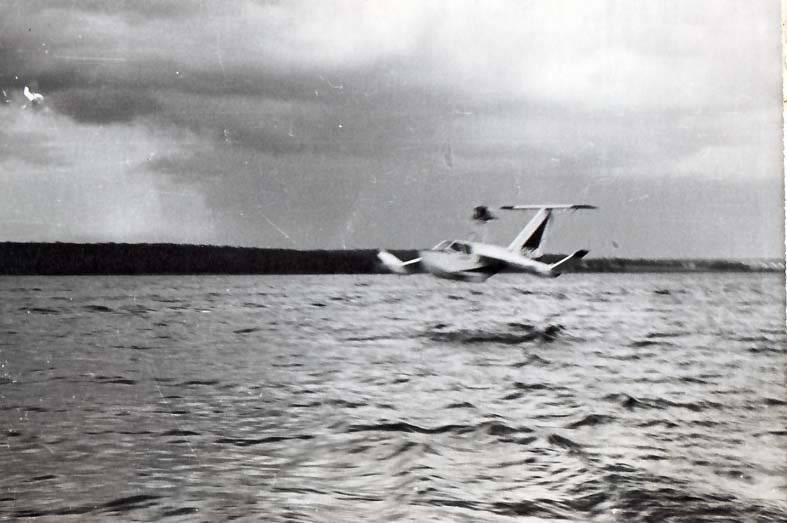
The detachable part of the wing is angled to the console at its end. Under the plywood trim there are two spars, six ribs and a bow stringer. The front side member has a box-section with shelves 25x12 mm and walls of millimeter plywood. Rear spar-channel has the same shelves and wall.
Aileron slotted type consists of a spar, five girder ribs, front and rear stringers. The spar-channel has shelves 15х10 mm and a wall of millimeter plywood. Pine lugs are attached to the side member, which are used to install aileron suspension units.
The inner cavities of the wing are covered with linseed oil in two layers. Outside, the ailerons and the eyelid wing are covered with AST-100 canvas, coated with NC-551 varnish in four layers and painted with white alkyd paint.
On water, float made of polystyrene PVC-1 gives stability to the screening machine. The floats are covered with ACTT (6) C1 fiberglass and attached to the wing console through four tabs made of 30XGSA steel with MXXUMX bolts.
The tail unit is a stabilizer with a rudder and a keel with a water rudder and a rudder. The keel is sheathed with plywood 1 mm thick and is a conventional design consisting of a sock, eight ribs and two spars. Rear side member - channel with shelves 28x14 millimeters of pine and 1,5-mm plywood wall. The front side member is the same as the rear, but it has shelves of millimeters 14х14. The keel rib socks are reduced to reduce the shreds and form an angle of almost 90 degrees with the leading edge of the keel.
The steering wheel consists of a sock lined with plywood, a side member, thirteen ribs and a tail stringer. The steering wheel is sheathed with AST-100 fabric and suspended from a keel at a couple of points.
In terms of the stabilizer has a trapezoidal shape. Its NASA-0009 profile is symmetrical, the installation angle is + 5 degrees from the horizontal of the screen. The stabilizer frame was assembled from the side member, front stringer, ancillary articles and 13 ribs. The stabilizer on the four ears of the keel is bolted. Spout stabilizer sutured millimeter plywood BS-1.
The stabilizer spar had a box-section with shelves of 20x12 mm made of pine and plywood walls of thickness 1 mm. On the side member there are two tabs for fastening the struts made of aluminum pipes. Tubes give the keel stabilizer combination rigidity.
The elevator has a design similar to that of a turn; to the stabilizer is suspended at three points. The stabilizer and steering wheel are covered with AST-100 fabric and covered with a dope and paint.
-Rotor unit consists of two-cylinder four-stroke carburetor motorcycle 32-strong engine M-63, a special step-down gear box (gear ratio 1: 2,3), wooden propeller ADD-2 fixed pitch (diameter 1,6 m) and motor frame of steel pipes 26 mm .
The engine is fastened to the motor-frame through rubber dampers with МХNUMX bolts and installed on the power frames nodes №№ 8, 9 behind the crew cabin. The engine in maximum power mode develops 12 revolutions per minute. The propeller from the gearbox receives 4700-1900 revolutions per minute, which corresponds to approximately 2100-95 kgf thrust.
The launch of the propeller-driven unit is produced by the electric starter ST-4 installed on the engine and rotates its camshaft through gears. Power supply of an electric starter 12-volt battery SAM-28. For reliable operation of the ignition system, the engine is equipped with a magneto "Katek".
The standard carburetors were not satisfactory due to inconsistent work with abrupt changes in engine conditions, therefore they were replaced with one Weber-32 DEM carburetor.
As can be seen from the description, the design of the ESCA-1 EKOLOLET is simple. Its design is dominated by plywood, wood, fabric. The number of metal parts is minimal and non-deficient alloys and steels are used for their manufacture. Externally, ESKA-1 is also quite simple, curved complex surfaces are few.
Aircraft performance characteristics:
Modification - ESKA-1;
Wingspan - 6,90 m;
Length - 7,80 m;
Height - 2,20 m;
Wing area - 13,85 m2;
Empty curb weight - 234 kg;
Flight weight - 450 kg;
Engine type - piston M-63;
Power - HP 32;
Maximum speed - 140 km / h;
Cruising speed - 100 km / h;
Practical range - 350 km;
Flight height on the screen - 300-1500 mm;
Crew - 2 person.
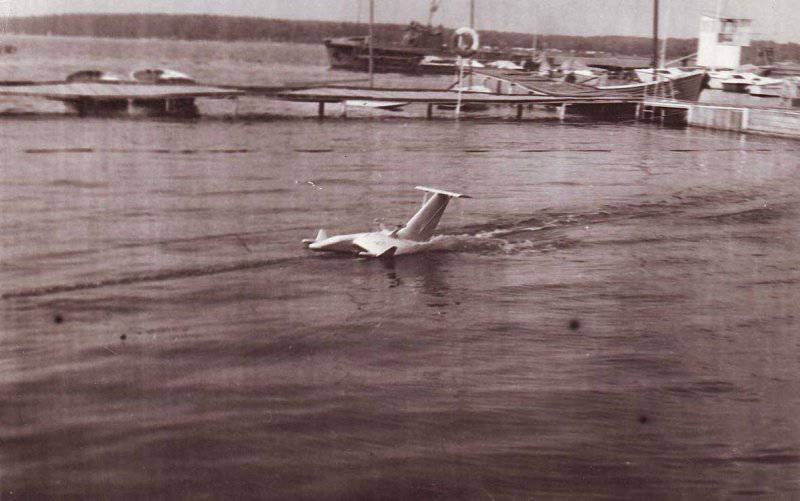
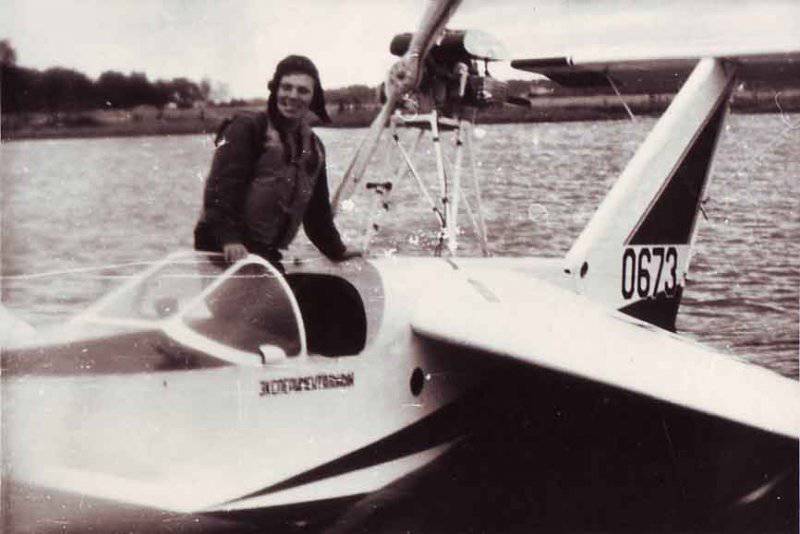
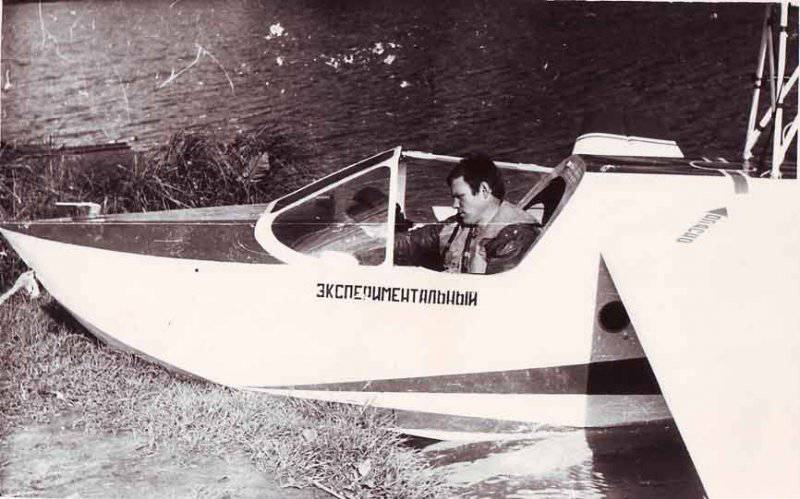
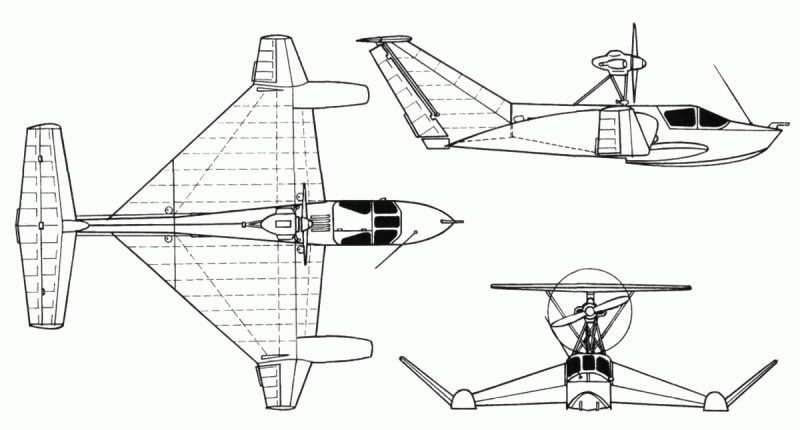
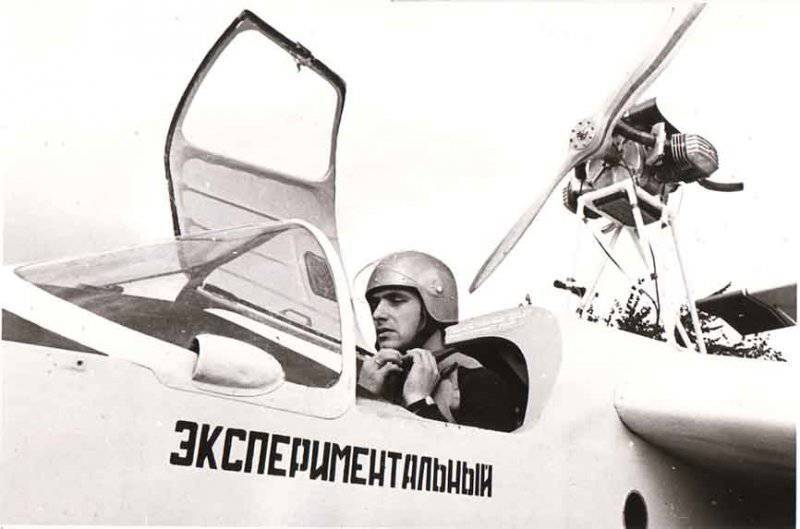
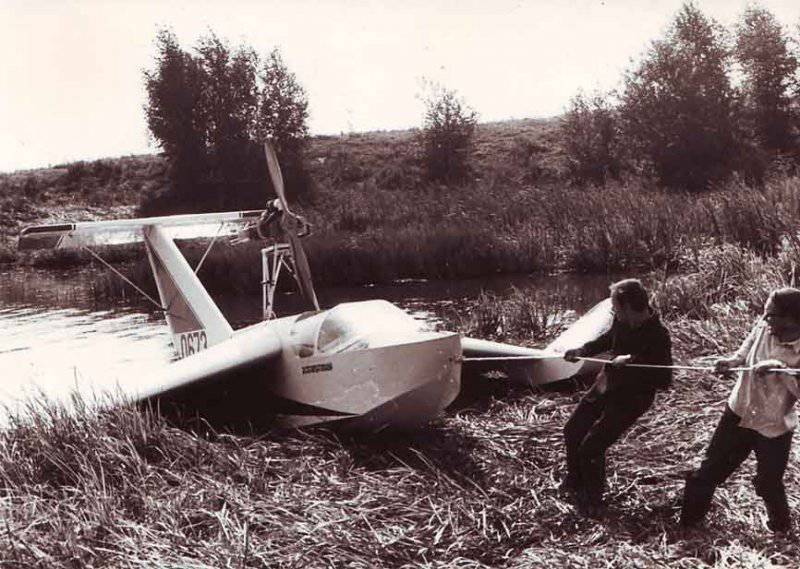
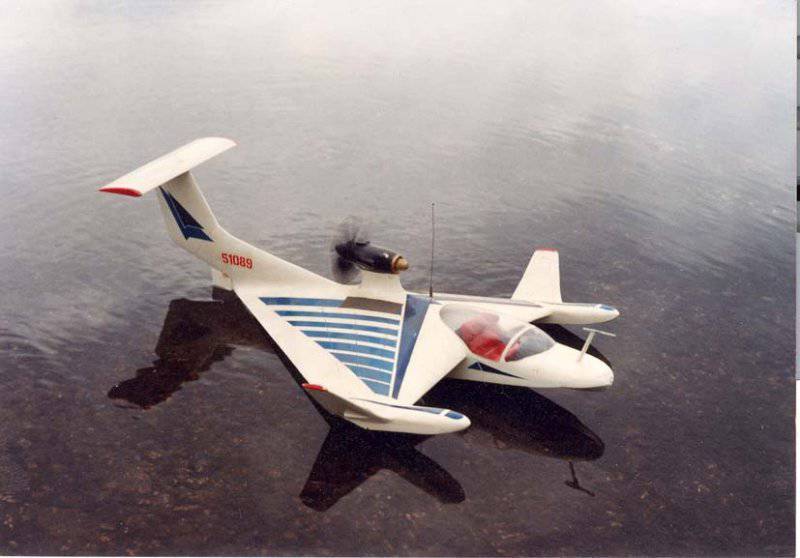
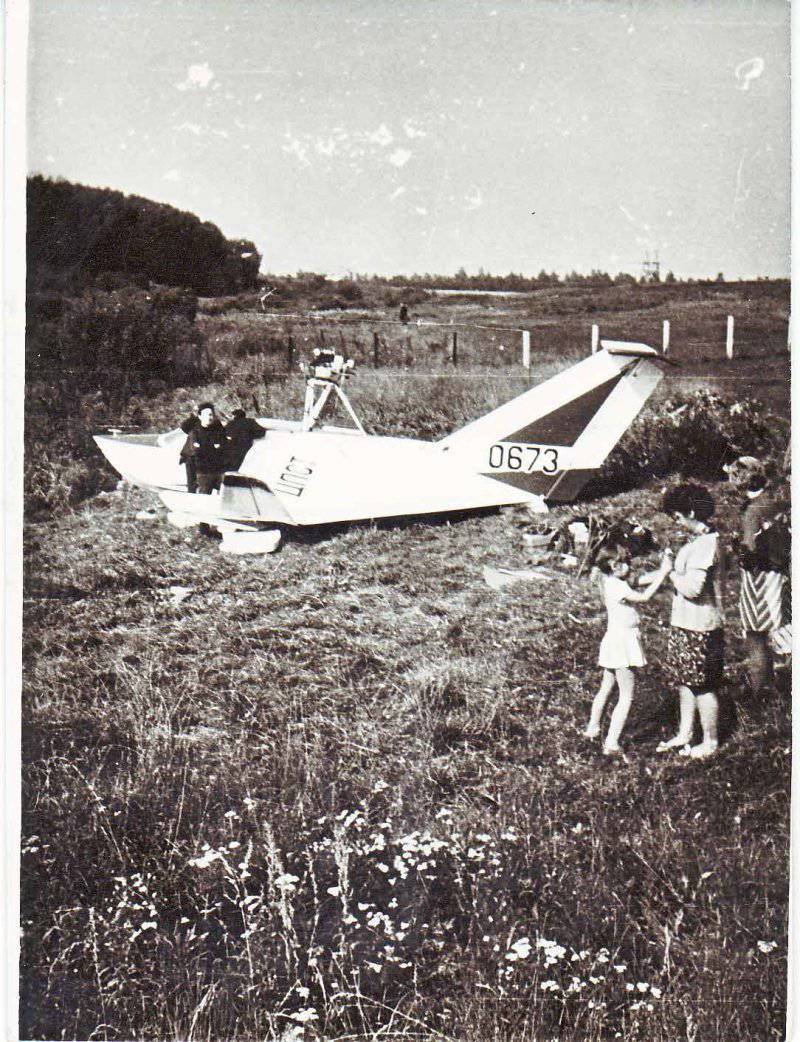

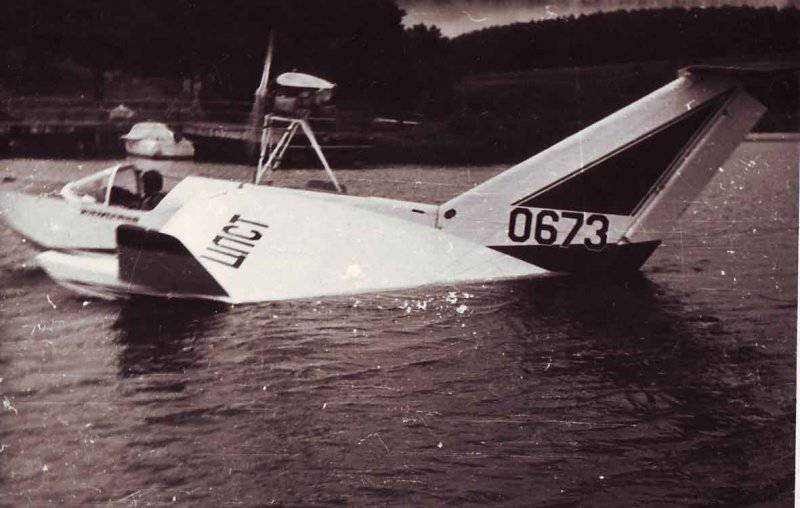
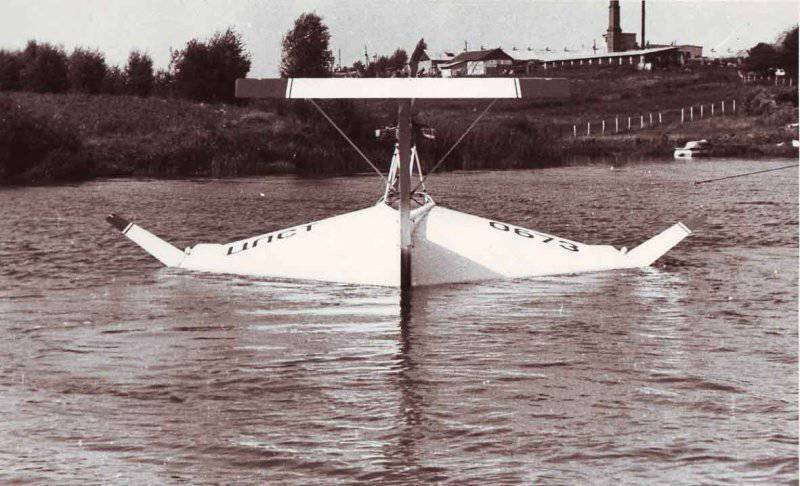
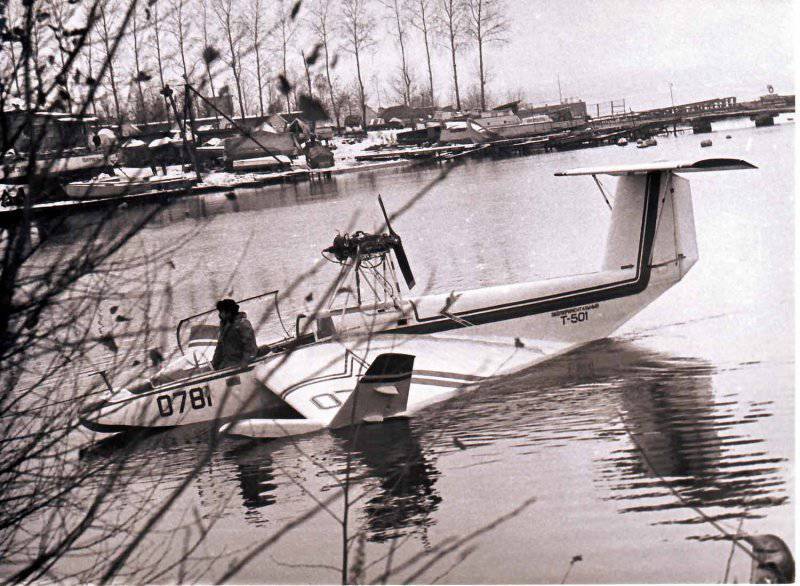
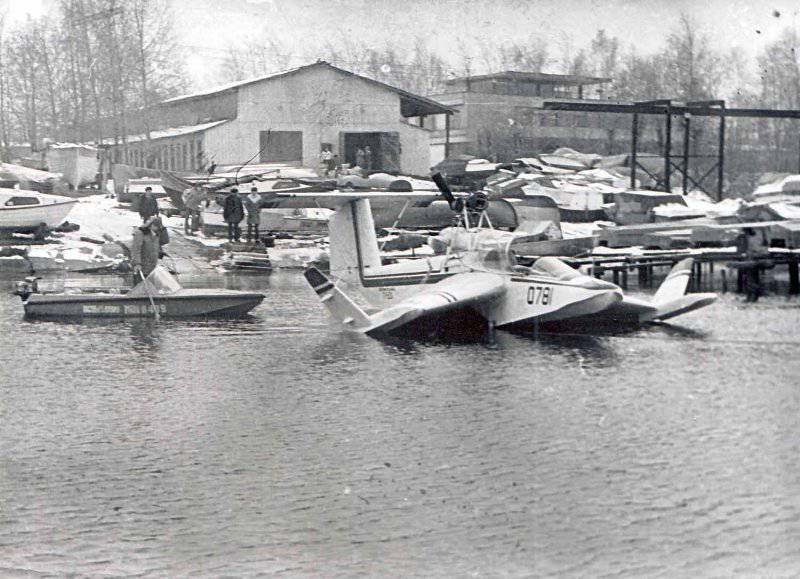
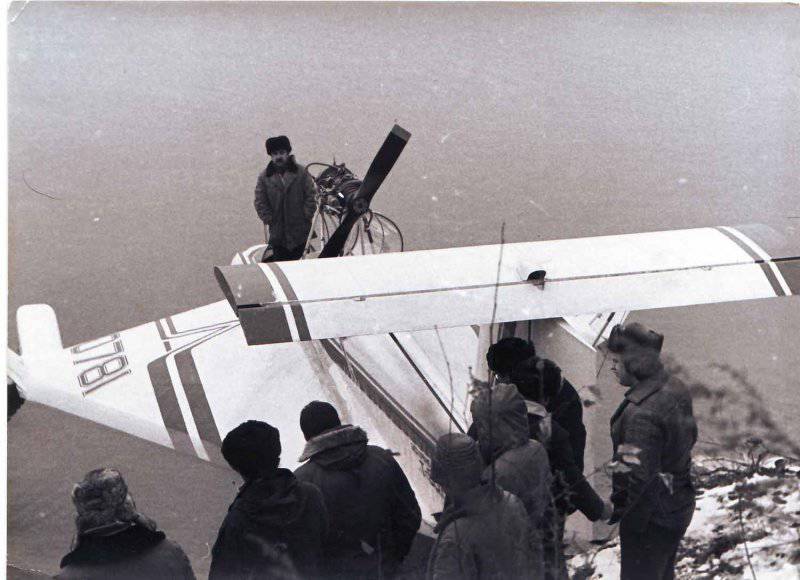
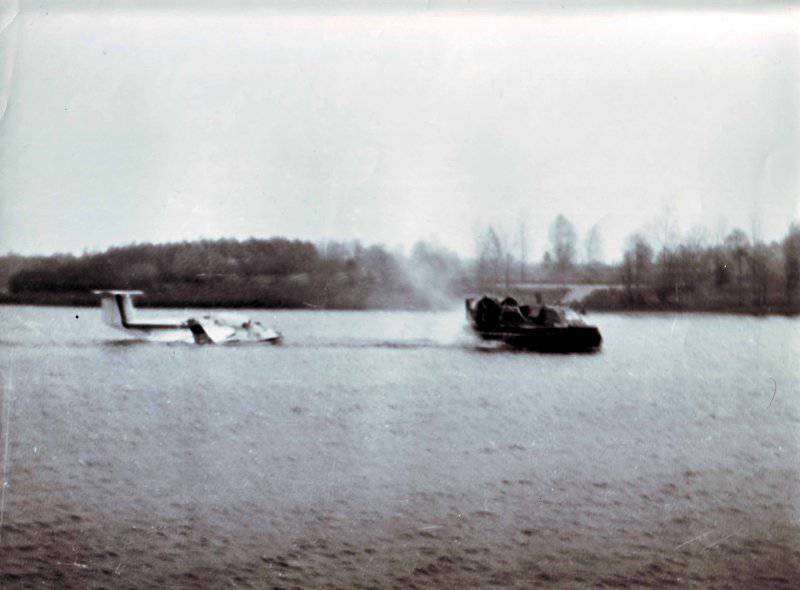
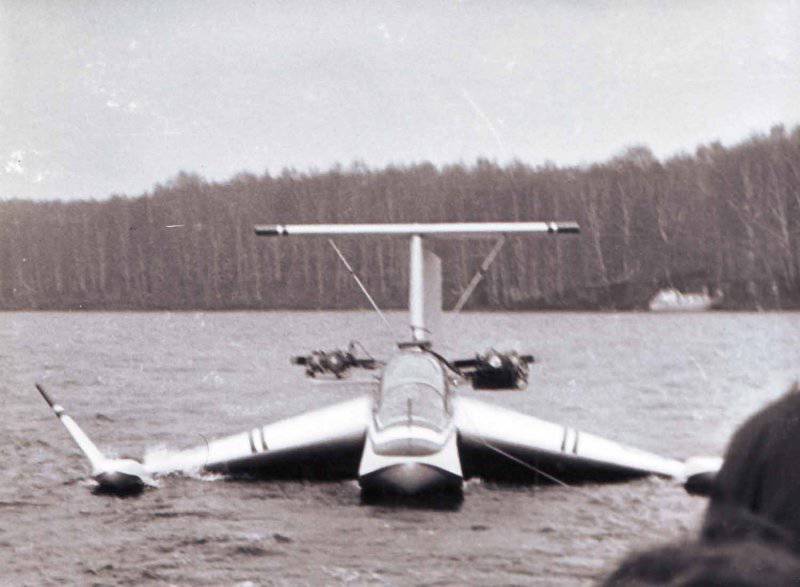
Information